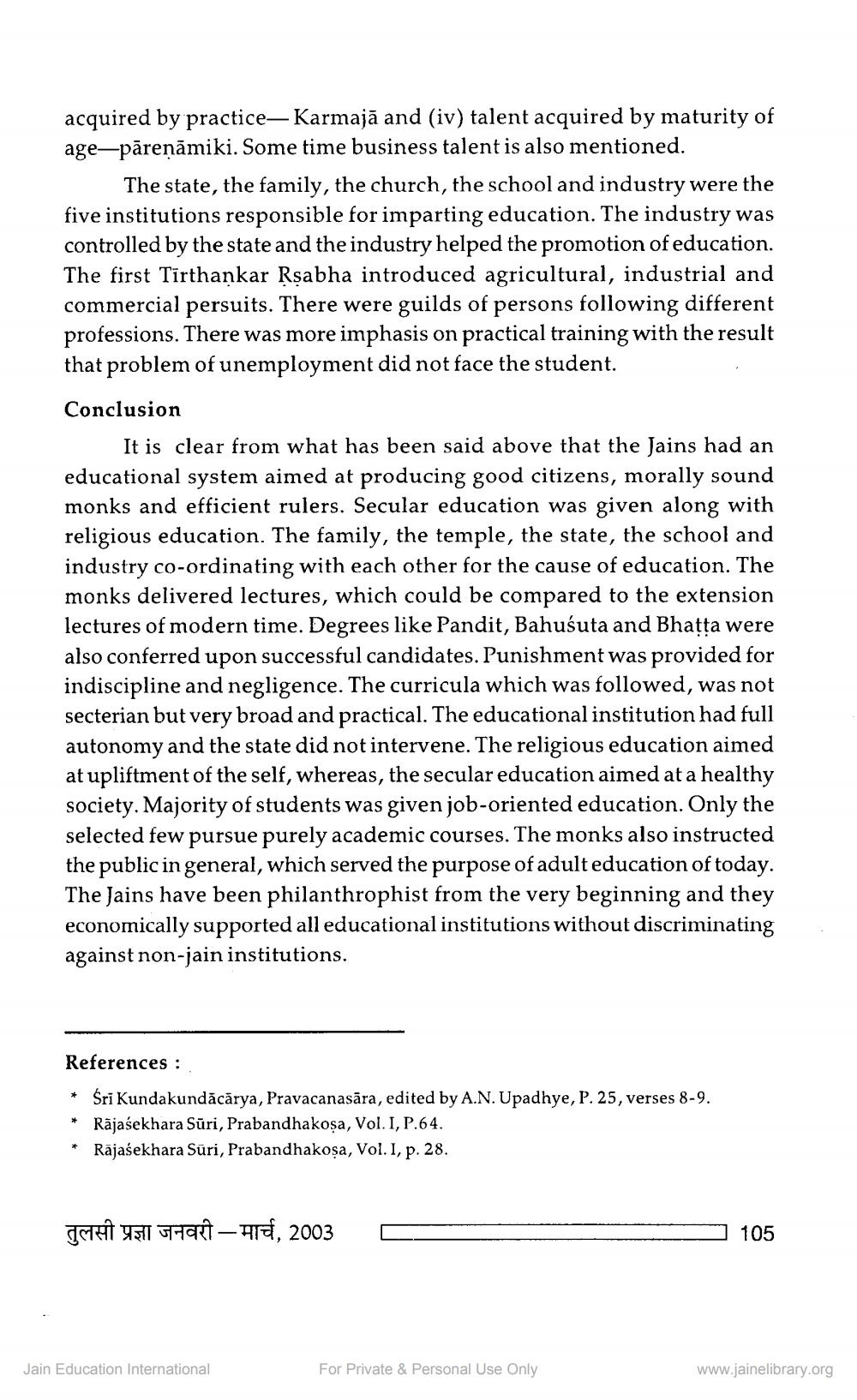________________
acquired by practice- Karmajā and (iv) talent acquired by maturity of age-pāreṇāmiki. Some time business talent is also mentioned.
The state, the family, the church, the school and industry were the five institutions responsible for imparting education. The industry was controlled by the state and the industry helped the promotion of education. The first Tirthankar Rṣabha introduced agricultural, industrial and commercial persuits. There were guilds of persons following different professions. There was more imphasis on practical training with the result that problem of unemployment did not face the student.
Conclusion
It is clear from what has been said above that the Jains had an educational system aimed at producing good citizens, morally sound monks and efficient rulers. Secular education was given along with religious education. The family, the temple, the state, the school and industry co-ordinating with each other for the cause of education. The monks delivered lectures, which could be compared to the extension lectures of modern time. Degrees like Pandit, Bahuśuta and Bhaṭṭa were also conferred upon successful candidates. Punishment was provided for indiscipline and negligence. The curricula which was followed, was not secterian but very broad and practical. The educational institution had full autonomy and the state did not intervene. The religious education aimed at upliftment of the self, whereas, the secular education aimed at a healthy society. Majority of students was given job-oriented education. Only the selected few pursue purely academic courses. The monks also instructed the public in general, which served the purpose of adult education of today. The Jains have been philanthrophist from the very beginning and they economically supported all educational institutions without discriminating against non-jain institutions.
References:
Śrī Kundakundācārya, Pravacanasara, edited by A.N. Upadhye, P. 25, verses 8-9. Rajasekhara Sūri, Prabandhakoṣa, Vol. I, P.64.
Rajasekhara Sūri, Prabandhakoṣa, Vol. I, p. 28.
*
*
*
तुलसी प्रज्ञा जनवरी-मार्च,
Jain Education International
2003
For Private & Personal Use Only
105
www.jainelibrary.org




